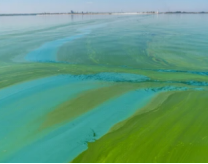
Different environmental compartments often accumulate a wide variety of organic pollutants, mainly from anthropogenic sources. Although these organic contaminants may be present in trace amounts, they adversely affect aquatic organisms, animals, and even humans. The use of aquatic organisms has been designated as a comprehensive target sample because of their widespread exposure to hydrophobic contaminants, including polycyclic aromatic hydrocarbons (PAHs), polychlorinated biphenyls (PCBs), polybrominated diphenyl ethers (PBDEs), organochlorine pesticides (OCPs), organophosphorus pesticides (OPPs), and musk fragrances. In this context, GC-MS and LC-MS can analyze semi-volatile and volatile organic compounds because of their high selectivity and resolution, good accuracy and precision, wide dynamic concentration range, and high sensitivity. Lifeasible can determine various non-polar or slightly non-polar organic pollutants (PAH, PCB, PBDE, OCP, OPP, and musk fragrance in mollusks). The suitability of GC-MS and GC-MS/MS for multiple screening of such contaminants can also be evaluated prior to the validation of mollusk samples.
Lifeasible specializes in detecting mollusk organic pollutants through gas chromatography-mass spectrometry and liquid chromatography-mass spectrometry. It can not only feedback on the decomposition of pollutants by mollusks but also detect the environment to a certain extent.
For sample preparation, each mollusk is dissected with a clean scalpel blade to separate the soft tissue from the shell. Individuals were dissected, homogenized, and freeze-dried in a Cryodos 50 freeze dryer and stored in amber glass vials at -20 °C in the refrigerator until analysis.
Mix the lyophilized mollusk samples and Florisil dispersion under optimized conditions. A glass syringe with polyethylene glass material in the bottom is filled from bottom to top: de-activated silica, activated silica, and finally, the mixed material. An isotopically labeled substitute is added to the mixed material, and a second glass material is placed on top. Subsequently, the analytes were eluted with DCM, and the eluate obtained was evaporated to dryness using mild N2.
The extracts were analyzed by GC-MS or LC-MS.
In the validation step, in addition to GC-MS, LC-MS is considered to improve selectivity and sensitivity.
Precision: ≤ 0.2% (precision of measurement is the degree of agreement between the measured values and the closeness to their "true" values, i.e., a combination of precision and correctness).
Accuracy: ≤ 0.3% (accuracy refers to the degree to which the average value of multiple measurements under certain experimental conditions is consistent with the true value).
If you are interested in our services, or if the service you want is not listed, please feel free to contact us, and we will get back to you as soon as possible.
Lifeasible has established a one-stop service platform for plants. In addition to obtaining customized solutions for plant genetic engineering, customers can also conduct follow-up analysis and research on plants through our analysis platform. The analytical services we provide include but are not limited to the following:
Get Latest Lifeasible News and Updates Directly to Your Inbox
Mechanisms Regulating Plant Chloroplast Biogenesis
April 15, 2025